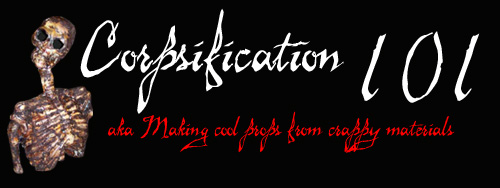| Making a cool corpse from crappy materials:
If your anything like me (and if your reading this tutorial, you have to be a little like me) you see all of these cool halloween projects that look like they require an engineering degree to build. That in itself scares the living sh*t outta me, which is why I'm writing this tutorial.
For years I've surfed sites with instructions on methods of "corpsification" and I was always apprehensive about trying it. Even though the photos on the pages looked awesome, I had doubts about how it would turn out if I tried it. But this year I decided to give it a shot regardless and corpsify a cheap $12 blow moded skeleton that I bought from Big-Lots.
Let me preface to say that i never liked the cheesy skeleton to begin with, and wanted to do a bit more than simply make it gross looking. i mean, just because it might turn out cool didn't neccessarily mean that it would work well in my yard display. seriously, what good is a gross looking skeleton that just hangs there dangling?! No, I wanted my skeletons to be posable, or at least be posed in a position that fit in with thier surroundings.
|

Material List:
A "Blucky" Skeleton - one of those cheap blow molded skeletons available from Big-Lots for under $15.
A tube of Elmers Exterior Wood Glue
Hot Glue - High temp glue sticks work best
Small bag of fake spiderweb
A couple of small 1" paint brushes
One small can of wood stain
A couple of woodscrews
Spool of Craft or Floral Wire
A box of cheap facial tissue
|

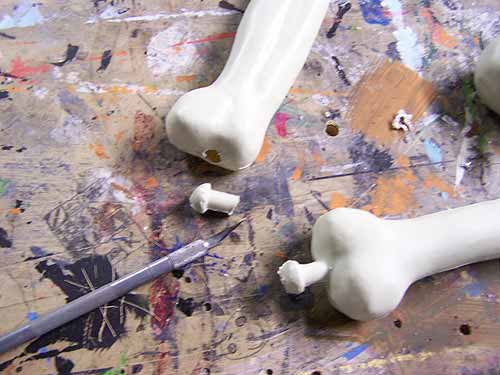
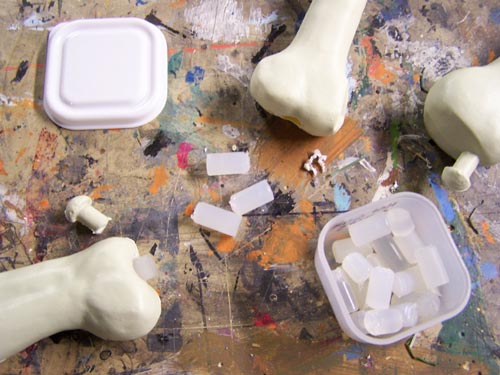
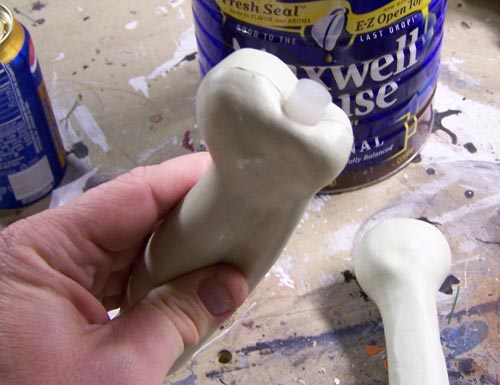
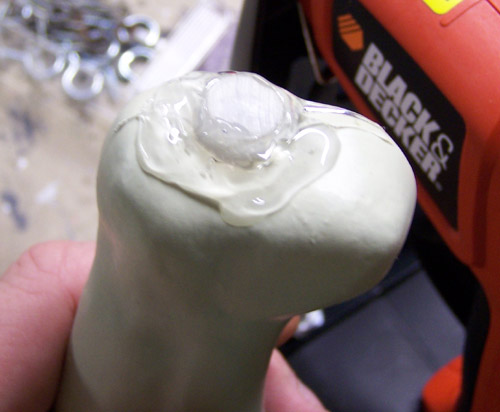
| Step 1:
The first thing that I did was to take the skeleton apart and remove the "plugs" that connected the bones. I wanted some way to connect them, but allow for a bit more positioning and stability. So after removing each of the plugs, I inserted a small 2" pice of high-temp glue stick that I cut using utility shears. I added some hot glue to the stick and shoved the glue-stick into the hole intill it barely broke the surface by about 1/4".
I did this for all of the bones of the arms, legs, hands, and feet.
|

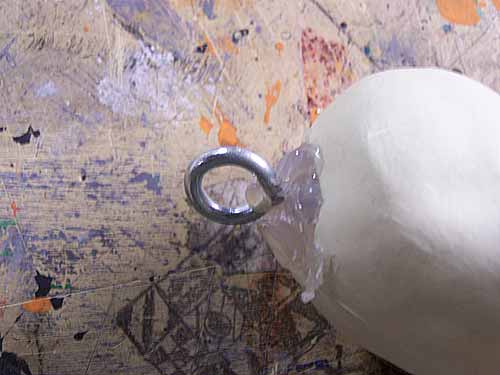
| Step 2:
Once the glue sicks had been set into place, I screwed a small eyelet into each glue-stick "plug". These eyelets would eventually become the connection points for the skeleton.
|

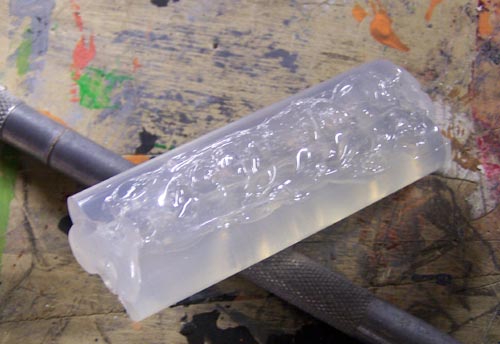
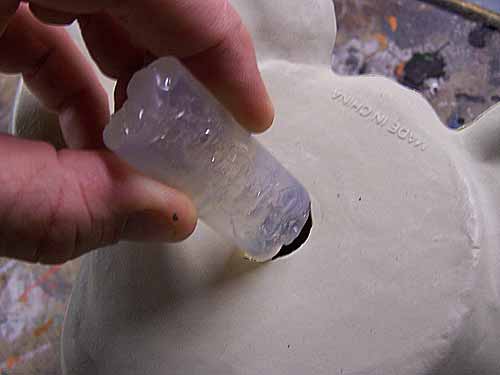
| Step 3:
Since the hole in the pelvis of the skeleton was bigger, I glued two glue-sticks together and used both of them to plug the hole. I also had to use two sticks in the bottom of the troso, since the original "plug" was massive compaered to the other bones' plugs.
I attached eyelets to both the pelvis and torso, but used bigger ones since they are the largest pieces in the skeleton.
|

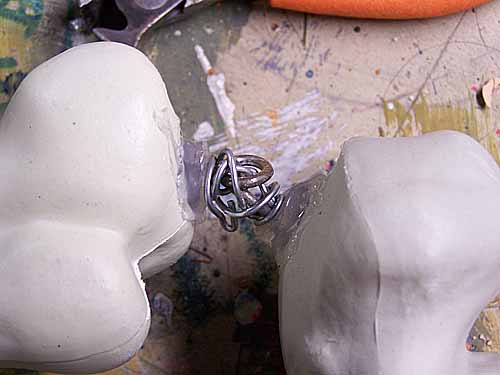
| Step 4:
Now it was time to reassemble the skeleton. I ran a medium guage wire through each of the connecting eyelets and continued wrapping them until i felt that they had sufficient strength to be posed.
|
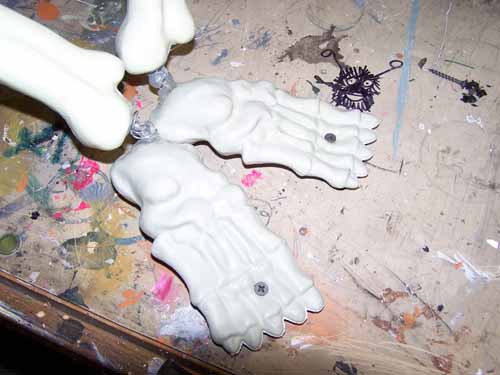
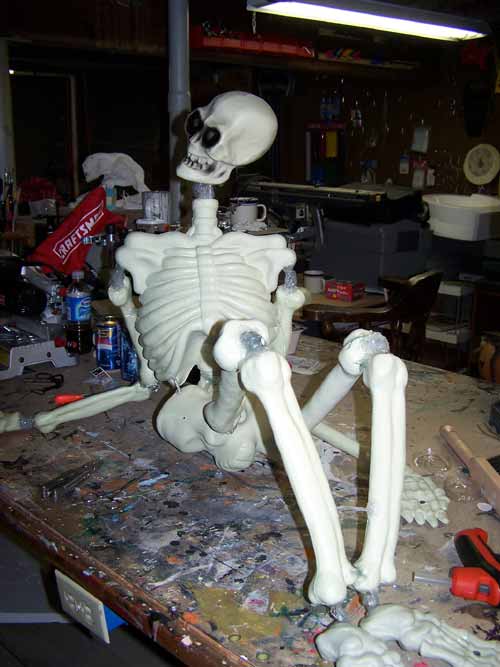
| Step 5:
Now my skeleton was fully reassembled and I was a bit disappointed that even though it was poseable, it wasn't anywhere near as sturdy as I had hoped. What I wanted was a skeleton that could be "locked" into position, but this would do well enough for me now.
Since I realized that the skeleton wouldn't be strong enough to be free standing, I decided to put it into a pose that would be stable and still work within my yard display. So in order to keep stablity, I decided to pose the skeleton into a sitting position, as if it was rising from the earth.
The first thing that I did was to secure the skeleton down to my work table with wood screws. In addition to securing the hands and feet, I began an anchoring process to help immobilize the pose. The wire and hot-glue process was sufficient to pose the legs and limbs in place, but I the torso needed added support to keep the figure into the sitting position.
|

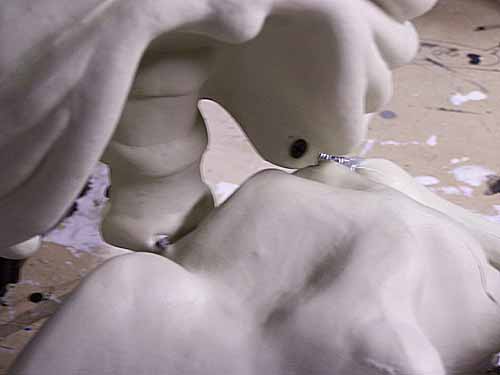
| Step 6:
I placed an additional wood screw through the rib cage and into the pelvis for additonal strength. Then I used a dental pick to punch through the areas that needed additional support and then tied them together with a light wieght, coated craft wire.
At this point, the entire skeleton had been reinforced and positioned like I wanted it to look when completed.
Everything had went smoothly up into this point, but I started to get nervous since I knew that it was nearing the time to do the actual "corpsification" process. All of the techniques that I had read about either seemed to take excessive preparation or a whole lot of materials.
But I'm the guy who builds stuff from cheap, household materials. I can't really afford gallons of latex, and I don't want to work with countless layers of paper mache. I wanted something quick, simple, and cheap.
I decided to use my variation of "snot-rag mache" to corpsify the skeleton. So off to Walmart I went and purchased a large bottle of Elmer's wood glue and a box of two-ply generic Kleenex. i bought the interior/exterior glue. It was a bit more expensive, but I figured it would have a better bond and it said on the bottle that it resisted mildew, and thats a good thing since I store our props in the basement.
Knowing what I do now, I realize that a single bottle of the glue can produce approximately 2 1/2 skeletons, and a single box of tissue will make tons of them.
|

What do you think? Contact me and let me know by clicking here.
|
